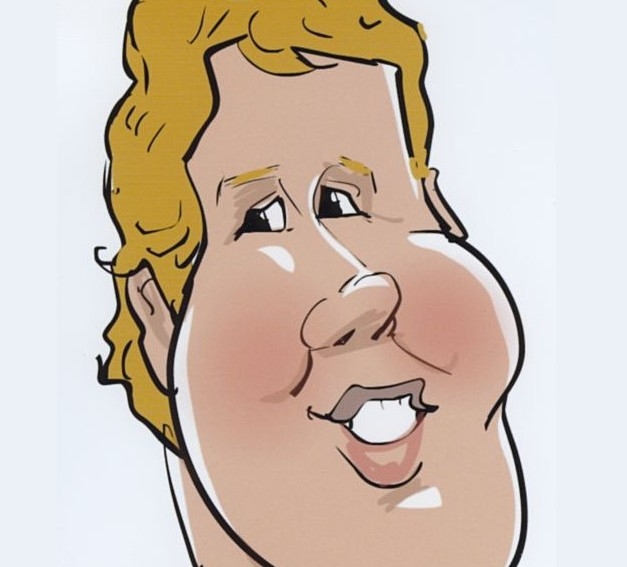ka7oei
About
- Username
- ka7oei
- Joined
- Visits
- 1,328
- Last Active
- Roles
- Member
- Points
- 2
-
installing Kiwirecorder on Ubuntu 16.04?
Although it is getting to be a bit dated - and is catered mostly toward use for WSPR decoding, there is this:
http://ka7oei.blogspot.com/2018/10/a-quick-and-probably-incomplete-guide.html
This may help you install Kiwirecorder, but not much about using it.
73,
Clint
KA7OEI -
OpenWebRX [using a transverter/down-converter with the Kiwi]
With power supplies: If, by its heft, you can believe there to be an iron block inside, it's a transformer type. If it feels like it's (mostly) empty, it's a switching type. If its AC input voltage rating is something like "100-240 volts", it is definitely a switcher.
If you bought any power supply/wall wart in the past 10 years or so, and you didn't actually go our of your way to find one that is NOT a switching type, it will be a switcher: It is getting increasingly difficult to find linear power supplies at all these days, so if it says nothing at all about what type it is, it's likely a switcher - and almost universally, switchers - as they come from the manufacturer, without further modification - are anathema to LF-HF radio reception.
73,
Clint
KA7OEI -
S-Meter Calibration
As the operator of the Northern Utah WebSDR, I've always made it a point to make sure that the S-meter reading reflects the signal at the main antenna port for any receiver, +/-1dB in the middle of the passband. Because the most heavily-used receivers are rather narrowband (e.g. <192 kHz) this isn't too difficult.
The Kiwi is different: Between the normal roll-off at the high end (due to sampling, the LPF, etc.) and the "limited attenuation" high-pass filter (e.g. attenuation goes from about 0 to 12dB between 12 and 7 MHz) to minimized overload from low-frequency HF signals, I've had to give up on making the Kiwi's S-meter read anything useful.
I suppose that a useful addition would be to have a number of S-meter and waterfall calibration points with frequencies, interpolation being done between. For example, "5000,-8; 7000,-9;10000,-12;12000,-17" (e.g. frequency in kHz, calibration value) to establish an approximated curve: 16 of those would likely be "good enough".
Certainly an "edge case" but it would be useful, nonetheless.
73,
Clint
KA7OEI -
Important: updated assembly guide (v1.1) for the aluminum enclosure
I have a bit of follow-up related to the KiwiSDR case fan. It would appear that at least some the noisiness is likely related to insufficient/poor lubrication after all.
Having powered down my Kiwi for a week or so due to other work in my shack, I powered it up again a while back, hearing it "shudder" as it tried to spin up. In the past, I've noted that this can often happen with a cold fan with an "Oilite" (sintered bronze) bushing that is dry. These sorts of "bearings" are very common in inexpensive fans, but they have a few weaknesses, including:
- The oil used in cheap Chinese fans seems to "dry out" rather quickly. It seems that the volatiles slowly evaporate, leaving behind heavier fractions. (I've noticed that it often smells slightly of naptha - not usually a sign of quality...)
- Oilite, by its nature, often tends to be "dry" when cold: Warming up, the embedded lubricant will often come to the surface, but this may take a while.
- If it goes on too long, the bearing surfaces can become worn and/or "coked" (e.g. surface lubricant may be cooked to a sludge/solid from friction) and reduce the ability of the embedded lubricant within the oilite to surface - if there's even any left.
* * *
Over the past 15 years, in non-critical applications (and because I may not have had a new fan of the same size - or because I was cheap...) I've actually "fixed" sleeve-bearing fans just to see what would happen over time. Sometimes this "fix" was simply re-lubricating it, but other times it required disassembly and cleaning with denatured alcohol to remove gum from the "dried" oil, reassembling and re-lubricating. In particularly tough cases, I would heat up the oilite bushing with a soldering iron before applying the new lubricant to help work it into the pores.
Unless the sleeve bearing or spindle shaft was physically damaged (due to galling, perhaps) the "rebuilt" fan has lasted far longer than the time before the fan had failed - and almost none of these have failed since. Some of these re-lubed sleeve fans have out-lasted ball-bearing fans, which often have lubricant that is of no better quality than is found in the sleeve bearings and offers little benefit in longer life: Typically, when this happens to ball-bearing fans, they cannot be fixed because the balls/races have been damaged/spalled from running dry.
* * *
Such seems to be the case of many of these very inexpensive fans, including the fan that comes with the Kiwi case: Insufficient/poor quality oil that evaporates quickly (within a year or so) resulting in noisy operation.
Carefully peeling the sticker back, I put a few small drops of a PTFE (Teflon) based synthetic lubricant - the same that I have used to "fix" fans in the past (as well as "un-gall" potentiometer shafts on an audio amplifier at my work about 20 years ago - none of which have "re-galled" since). This stuff is sold in the U.S. as "Super Lube" (made by Synco) which is a liquid in a bottle or a small pen-sized dropper - readily available on Amazon.
After working the new lubricant into the bushing (sliding it back and forth to distribute it) I cleaned the plastic housing with a cotton swab and alcohol and covered it with a round piece of plastic tape (the reason for cleaning the plastic) to keep dust out of it. (Note that "Household oil" or "3-in-1 oil" should not even be considered for this purpose - and is probably similar to what was originally used. Don't even think of something like WD-40!)
Since it was re-done, the fan's noise has been only a slight whine of the fan's BLDC driver and air movement - it wasn't this quiet when it was new.
I have three more Kiwis at a remote site, all of which are getting noisier every time that I go there, and they will all get the same treatment on the next site visit and will be observed in the long term.
Clint
KA7OEI -
Ethernet filters
I noticed the DXE devices when they first appeared - and have wondered about them. I did notice that they didn't support POE (hence the claim of galvanic isolation) which means that they would be of little help when it comes to quieting the oft-noisy IP cameras that are becoming increasingly common, nor would they help in preventing the conduction and radiation of power supply noise from a POE-powered wireless link radios (e.g. for Internet or "Mesh" operation) - or from the power inserters/Ethernet switches that power these devices, which are often bad or worse than the device being powered in terms of RFI.
This makes me suspect that the DXE devices are simply back-to-back Ethernet transformers - with some care taken in the design to allow operation at Gig-E speeds.
For quieting Ethernet connections I have, for some time, just used the "flat" Ethernet cable (often called "Cat-6" or "Cat-7", regardless of whether they really are...) wrapped around large-ish ferrite toroids. It would seem that one can wrap this "flat" cable rather tightly without upsetting its geometry as it will still work fine at Gig-E speeds when "spliced" inline with a Gig-E circuit, provided that one uses a Gig-E rated double-female RJ-45 connector.
In testing, I've verified the following in a fixture that allowed the insertion of an Ethernet cable/device and inputted a signal on one side with a spectrum analyzer on the other side, terminating in 50 ohms:
Using 10-12 turns on the following cores (approx. 33mm O.D., 23mm I.D., except where noted):
- Mix 77: >=20dB across AM BCB and onto 160 meters (Fair Rite 5977003801)
- Mix 31: >=20dB from 160 meters through 30 meters (Larger core - Fair Rite 2631803802 - I haven't found a convenient source for the 33mm O.D. in this mix)
- Mix 43: >=20dB from 40 meters through 10 meters (Fair Rite 5943002701)
For a particularly troublesome situation, three cores with 10-12 turns each - two Mix 43 and one Mix 31(or Mix 77, which works almost as well at 40 meters ) in series, but each separated by about 1.5 inches (3-4cm) to prevent cross-coupling seemed to work well from 160-10 meters with well over 30dB isolation (>50dB measured at some frequencies) and about 20dB to 6 meters. I've used a similar scheme with a Mix 77 core to keep my 630 meter and 2200 meter transmissions from getting into devices.
Because these are simply common-mode chokes, they have no effect on (properly made) signals on the Ethernet cables themselves - and can be used to pass DC (as in POE).
For higher frequencies (VHF, UHF) it gets increasingly difficult to effectively quash radiation on cable, but more common split ferrites designed for the frequency range, placed as close to the offending device(s) as possible, are the best bet.
73,
Clint
KA7OEI





